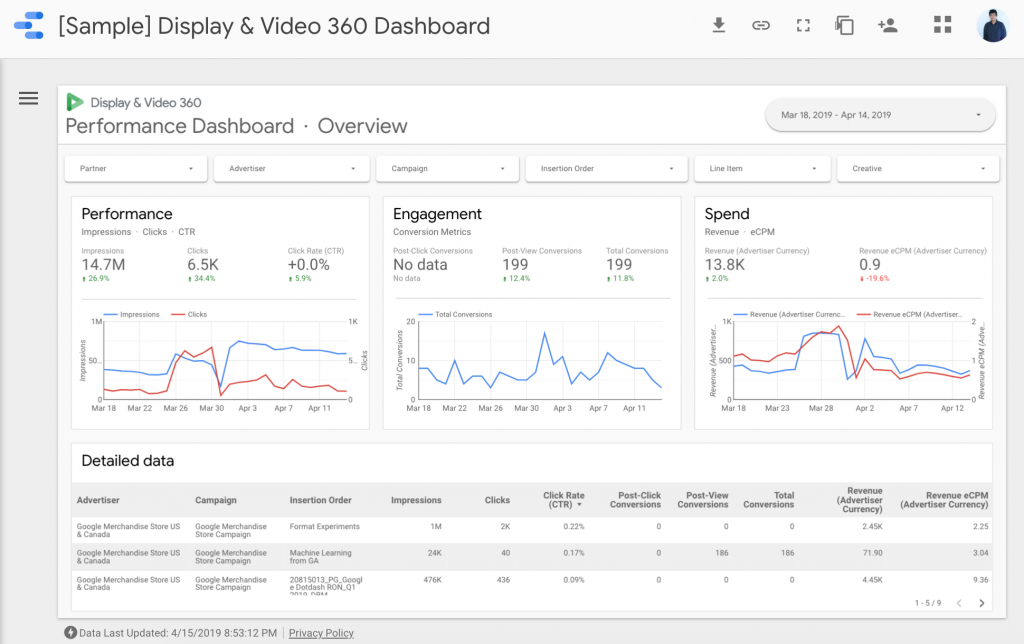
Make confident, data-driven decisions with actionable ad spend insights.
16 min read
The marketing team presents impressive numbers: a 15% increase in ad spend, 40% more website traffic, and a conversion rate that looks respectable on the surface.


Simul Sarker
CEO of DataCops
Last Updated
October 26, 2025
You're sitting in a quarterly business review. The marketing team presents impressive numbers: a 15% increase in ad spend, 40% more website traffic, and a conversion rate that looks respectable on the surface. But something doesn't add up. Your CAC is climbing. Your ROAS is declining. When you dig into the numbers, you find that marketing's internal reports don't match what you're seeing in your finance system. Worse, nobody can explain the discrepancy.
This isn't incompetence. This is the silent tax of data loss, and it's bleeding your company dry.
For years, businesses built their growth strategies on foundations that were cracking long before anyone noticed. Third-party tracking scripts that browsers started blocking. Analytics platforms that captured only 40-60% of actual user behavior. Bot traffic artificially inflating metrics. The result: decisions made on incomplete, unreliable data that cost you real money in wasted ad spend, misallocated resources, and missed growth opportunities.
The financial impact of poor data quality extends far beyond a single department. It touches your customer acquisition strategy, your product roadmap priorities, your inventory planning, and your ability to forecast accurately. For CFOs and business leaders, the question is no longer whether to invest in data integrity, but how to calculate the true ROI of fixing it.

Most companies don't realize how much data they're actually losing. The problem is invisible because it's absence, not presence. Your analytics tool isn't broken; it's just incomplete.
Apple's Intelligent Tracking Prevention (ITP) silently blocks or limits third-party scripts on Safari, which captures roughly 25-30% of web traffic globally and over 50% on mobile. Chrome's deprecation of third-party cookies, which completed in 2024, removed the technical infrastructure that powered the old tracking ecosystem. Ad blockers, now used by hundreds of millions of users, don't just hide ads; they block the tracking pixels and scripts that feed your analytics systems. VPNs and privacy-focused browsers mask user identity and location.
The cumulative effect is staggering. Research from industry analysts and platforms tracking this shift consistently shows that traditional analytics tools miss 40-60% of user sessions and conversions from certain segments of your audience. This isn't a rounding error. This is a fundamental blind spot in how you understand your business.
Consider a practical example. Your ads platform reports 1,000 conversions last month. Your analytics tool reports 650. Your CRM shows 580 actual customers. Which number is real? All three are "real" in the sense that they're measuring something, but they're measuring different populations with different rules. Some conversions are lost to tracking restrictions. Some are duplicated by unreliable attribution. Some never reach your CRM because the integration failed or the bot filter caught them. You're not making decisions based on data; you're making decisions based on guesses.
For finance teams, this becomes a budgeting nightmare. If you can't trust your CAC, you can't forecast growth accurately. If you can't validate which marketing channels actually drive revenue, you can't allocate spend efficiently. You're forced to rely on gut feel and comparative benchmarks instead of your own verified data, which means you're essentially guessing at a $1-5M+ annual spend depending on your size.
The true cost of data loss isn't just inaccuracy; it's compounding inefficiency across your entire organization.
Wasted Ad Spend and Attribution Confusion
Your marketing team sees a social media campaign that reports 500 conversions at a $25 cost per conversion. This looks good, so you allocate more budget there. But if 30-40% of your conversions aren't being tracked due to ITP or ad blockers, the actual cost per conversion is closer to $35-40. You're systematically overfunding underperforming channels while defunding ones that might actually be more efficient.
This problem compounds across dozens of decisions. By the end of a quarter, you've reallocated hundreds of thousands of dollars based on incomplete data, creating a feedback loop where inefficient channels appear efficient and vice versa.
Inventory and Forecasting Misalignment
If your analytics underestimate demand by 30-40%, your product team makes decisions on the wrong baseline. You stock fewer units. You hire fewer customer service reps. You underinvest in server capacity. When you later discover you actually had far more customer demand, you've already lost the opportunity to serve it efficiently. For subscription or SaaS businesses, this means overstated churn metrics and understated LTV calculations, leading to underinvestment in customer success.
CRM Data Poisoning
Your sales team's most powerful tool is accurate customer intent and behavior data. When your analytics misses 40-50% of customer interactions, your CRM becomes a partial record. Sales reps see fewer touchpoints than actually occurred. They make worse prioritization decisions. They follow up with weaker signals. Your conversion rate suffers not because of poor sales execution, but because the data fueling the process is incomplete.
Regulatory and Compliance Risk
The irony of data loss is that it often coexists with compliance risk. You're simultaneously losing data you should be collecting and collecting data in ways that violate privacy regulations. You're running pixels you don't have proper consent for, tracking users across domains in ways that breach GDPR, or storing data without encryption. The penalties for this are stark: GDPR fines up to 4% of annual revenue, CCPA penalties of $100-7,500 per violation. For a mid-market company with $50M in revenue, a single regulatory action can cost $500K-2M+.
Let's make this concrete with scenarios based on actual business profiles.
Scenario 1: Mid-Market SaaS ($10M ARR)
A SaaS company with $10M in annual revenue operates on typical metrics: $50 CAC, 12-month payback, 8-figure annual ad spend ($2-3M), and 3% website conversion rate.
Due to data loss, their analytics underestimate conversions by 35%. This means they think they're converting 2.2% when they're actually converting 3.4%. In response, they reduce ad spend, thinking efficiency has declined. They also reallocate budget away from high-performing (but underreported) channels toward low-performing (but overreported) ones.
The financial impact over one year:
For a company with 40% EBITDA margins, this is $240K-360K in lost profitability. That's equivalent to a 2.4-3.6% reduction in net profit.
Scenario 2: E-Commerce ($5M Annual Revenue)
An e-commerce company with $5M in annual revenue, 2% conversion rate, and $30 average order value operates on thin margins (15-20% net).
With 45% data loss, they think they're converting at 1.1% when they're actually converting at 2%. Their CAC calculation is off by 40%. They reduce ad spend thinking ROI has declined, missing significant growth opportunity.
Impact over one year:
For a 15% net margin business, this is devastating.
Scenario 3: Large Enterprise ($100M+ Revenue)
For an enterprise, the problem is often reversed: they have multiple analytics systems, none of which talk to each other, and some of which have conflicting data.
The CFO sees marketing report $500M in attributed revenue from $20M in spend (25x ROAS). Finance sees actual revenue of $380M. The discrepancy of $120M creates forecasting chaos. Product teams double down on features that appear high-value but are actually mired in attribution noise. Sales ops teams spend thousands of hours trying to reconcile CRM and analytics data that should align but don't.
Impact:
Many companies, when faced with data quality problems, try to solve them with their current tools. They add another analytics platform. They implement server-side Google Tag Manager (sGTM). They layer on a data warehouse. But these solutions often treat the symptom, not the disease.
Simo Ahava, an industry analyst and expert in analytics infrastructure, notes that "Server-side tagging is not a magic bullet for circumventing privacy controls. Its main benefit is to give the site owner more control over what data is collected and where it is sent." But as he points out, this control is meaningless if the data never arrives in the first place due to client-side blocking.
The fundamental issue is that most solutions still rely on client-side scripts to initially collect data. Those scripts are what get blocked. Moving the data to a server doesn't solve the collection problem; it just moves the destination.
The cost of this approach is hidden because it's spread across the organization:
Total annual cost of the "bolt-on" approach: $500K-1.1M, with minimal improvement to actual data completeness.
A fundamentally different approach exists: building your data foundation on true first-party collection from the ground up.
This isn't about replacing Google Analytics or server-side GTM. Those remain valuable. It's about ensuring the data feeding into those systems is complete and trustworthy in the first place.
The architecture is elegant in its simplicity. A single DNS configuration change allows your analytics script to be served from your own domain, making it a trusted, first-party resource that browsers and privacy tools recognize as belonging to your site. Instead of multiple pixels each claiming to represent part of the truth, a single verified source collects clean data and distributes it to all your downstream tools.
[IMAGE: first-party data collection architecture diagram DNS CNAME]
The financial return case breaks down into direct and indirect benefits.
Direct Quantifiable Benefits
First, recovery of lost data. When a business implements true first-party collection, they typically recover 35-50% of previously lost user sessions and conversions. For the SaaS company in our earlier scenario, this means recovering 100,000-150,000 in previously invisible sessions annually, dramatically improving the accuracy of CAC and LTV calculations.
Second, cleaner data through fraud validation. By actively filtering bot traffic, VPN sessions, and proxy connections at the point of collection, you eliminate the noise that pollutes downstream systems. This might sound like you're "losing" data, but you're actually gaining clarity. The difference between 10,000 sessions (20% of which are bot traffic) and 8,000 sessions (all human) is that the second number lets you make better decisions.
Third, compliance certainty. A first-party CMP properly integrated into your data collection ensures consent is captured and honored consistently. This reduces regulatory risk from $300K-1M in potential penalties to a manageable, documented compliance posture.
Indirect Strategic Benefits
Improved attribution accuracy leads to better channel allocation. When your data loss is evenly distributed across channels, you might not notice the problem. But when you fix it, you often discover that one channel was systematically underreported. Reallocating even 10-20% of budget from overreported to underreported channels can improve overall ROAS by 15-30%.
Better product decisions. When product teams have accurate data about which features drive engagement and conversion, they deprioritize work that was only thought to be valuable. This alone can improve product velocity and reduce engineering waste by 20-30%.
Faster sales cycles and higher close rates. When your sales team has complete visibility into customer behavior and intent, they sell smarter. Deal velocity improves by an average of 10-15% because reps are following up on stronger signals.
To evaluate whether first-party data architecture makes financial sense for your company, use this framework.
Step 1: Quantify Your Current Data Loss
Start with your conversion metrics. Compare what your ad platform reports, what your analytics platform reports, and what your CRM records. Calculate the average discrepancy.
Next, estimate the financial impact of 1% improvement in conversion tracking accuracy. For a company with $5M in revenue and 2% conversion rate, 1% better tracking accuracy is worth $25K-50K in insights that improve decision-making.
Multiply this by the estimated percentage of data you're currently losing (typically 30-50% for businesses using traditional tools).
Step 2: Model the Impact on Ad Spend Efficiency
Using historical data, calculate how often you've reallocated budget based on channel performance. For each significant reallocation, estimate the impact (positive or negative) that better data might have had.
A common finding: misattribution causes 1-2 major budget misallocations per year, each costing $100K-300K in lost efficiency. Better data reduces this by 50-70%.
Step 3: Assess Product and Operations Improvements
Quantify the cost of your current data reconciliation efforts. How many hours per month does your BI or analytics team spend reconciling disparate data sources? Multiply by fully-loaded hourly cost.
Estimate the value of faster, more confident product decisions. In a SaaS company, this might translate to 1-2 additional quarters of productive engineering time annually by eliminating work on features that only appeared high-value due to data artifacts.
Step 4: Calculate Implementation and Ongoing Costs
A true first-party data solution typically costs $5K-20K to implement (for a small business) to $50K-150K (for an enterprise with complex integrations). Ongoing costs are typically $500-2,000 monthly depending on scale and features.
Compare this to your current spend on analytics tools, data warehouse, and engineering labor to maintain them. Most companies find they're spending $1,500-5,000 monthly already, so the net new cost is often $0-1,000 monthly.
Step 5: Build a Simple ROI Model
Use these inputs to build a simple spreadsheet:
For most mid-market companies, this produces a Year 1 payback of 4-8 months and a Year 1 net benefit of $150K-500K.
Rather than stitching together multiple vendors, an integrated first-party platform like DataCops consolidates analytics, fraud detection, and consent management into a single architecture. This provides several financial advantages over a patchwork approach.
First, reduced complexity. Instead of managing APIs across five vendors (analytics, ad platforms, consent, bot detection, CRM), you manage one integration that handles all of it. This reduces implementation time, ongoing maintenance, and the risk of integration failures.
Second, superior data quality. When fraud detection and compliance are built into the collection layer rather than bolted on afterward, the data flowing downstream is cleaner and more reliable. This compounds the value of every downstream tool.
Third, unified governance. A single source of truth for user data means marketing, sales, and product teams all work from the same numbers. This eliminates the organizational friction and wasted time that comes from disagreeing about what happened.
For more detailed information on how first-party data collection differs from the traditional third-party approach, and why this architectural shift matters, see the comprehensive guide on first-party vs. third-party data.
There's a hidden cost to waiting. Every quarter you operate on incomplete data while competitors invest in data integrity, you're falling further behind in decision quality and execution speed.
Competitors with accurate data are reallocating budget faster. They're discovering underexploited channels before you do. They're optimizing their product based on clearer signals. Over 18-24 months, this advantage compounds into measurable market share loss.
Internally, every quarter of delay also means another round of strategic planning based on questionable data. You commit budget to initiatives that only appear high-value because of attribution artifacts. You hire teams to support products that don't drive revenue as much as the data suggests. You make these decisions in good faith, but the outcome is organizational slack and wasted capital.
For a company with $10M in revenue, this delay tax might total $500K-1M annually in lost efficiency and competitiveness. For a public company, it shows up as disappointing forecast accuracy, which affects stock valuation. For a private company, it affects the quality of decisions during fundraising or acquisition evaluation.
If you're in marketing or product leadership, here's how to frame this conversation with finance.
Start with a specific problem: "Our attribution doesn't match. We're making budget decisions based on data that we know is incomplete." This isn't a vendor pitch; it's a risk acknowledgment.
Quantify the cost of the status quo using the scenarios above. For your company's size and profile, what percentage of revenue might be at risk from poor data?
Propose a bounded pilot. Instead of a company-wide implementation, ask to implement true first-party data collection on your highest-traffic channel or product line. This limits risk and creates a proof point.
Set clear success metrics: What percentage of previously lost data will we recover? By what percentage will attribution accuracy improve? How will we measure the business impact?
Expect the conversation to be about trade-offs. Yes, there's an upfront implementation cost. But compared to the annual drag of poor data quality, the ROI is typically clear within 6-12 months. The conversation shifts from "Can we afford to do this?" to "Can we afford not to?"
For CFOs and financial leaders, this is ultimately about reducing uncertainty in strategic decisions. Better data doesn't guarantee better outcomes, but worse data guarantees worse decision-making.
The investment in first-party data integrity is an investment in the quality of every decision your organization makes downstream. It's not a marketing problem. It's not a product problem. It's a fundamental business problem that touches revenue, profitability, growth potential, and risk management.
The cost of data loss is not just in wasted ad spend, though that's significant. It's in the compound effect of decisions made on incomplete information: misallocated capital, missed growth opportunities, wasted organizational energy on low-value work, and regulatory risk.
The financial case for addressing this is compelling. Most companies find that the cost of implementing a true first-party data architecture pays for itself in 6-12 months, with ongoing returns of 20-50% annually as data quality improvements compound across the organization.
The question isn't whether you can afford to invest in data integrity. It's whether you can afford the certainty of continued inefficiency if you don't.





